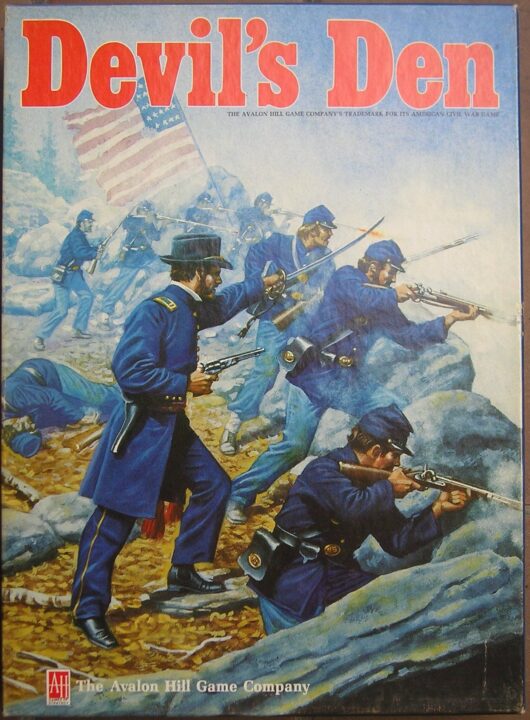Alright folks, fire up your pitchforks and grab your pointiest tail—it’s review time! This time, my friends and I spent a weekend wrangling our way through Devil’s Den. Do you and your mates love a good mix of strategy, backstabbing, and a pinch of random chaos? You’re in the right place. Let me break down what worked, what made us cackle, and what nearly drove us to toss the board out the window. Spoiler: There were snacks, accusations, and at least one suspiciously lucky dice roll. Let’s see how Devil’s Den fared at our table.
How It Plays
Setting up
First, everyone picks a sneaky-looking minion and grabs their matching tokens. Lay out the board, shuffle the event and item decks, and put the nasty Devil mini at the center. Everyone starts in their own corner—unless your group fights before the game starts, then someone always tries to be in the middle. Set up the resources, hand out player boards, and listen to someone read the rules out loud while everyone else ignores them. Classic.
Gameplay
On your turn, you move your minion, grab goodies, and try to outsmart the other players. You can attack, sabotage, and sometimes work together—usually for about three minutes until someone gets greedy. Draw event cards: sometimes they’re good, sometimes you wish you hadn’t. Managing resources is key, but so is keeping an eye out for backstabbers (I’m looking at you, Pete). Rounds go fast, unless someone overthinks every single move (again, Pete).
Winning the game
The winner is the first player to collect the set goal of soul tokens, or whoever survives the longest if you’re playing with real cutthroats. Just don’t get too cocky—last time I thought I’d win, I fell into a trap my own brother set. Winning takes nerve, planning, and more than a little bit of mischief.
Want to know more? Read our extensive strategy guide for Devil’s Den.
How Balanced Is Devil’s Den Between Strategy And Random Chance?
Let’s get something straight: Nothing boils my board game blood more than rolling dice and realizing my fate is sealed by pure luck. If I wanted that, I’d just play “Yahtzee” with my grandma, right?
So, when I first played Devil’s Den with my usual crew (the Brain, the Chaotic One, and me—the Hungry One), we all wondered: Are we playing chess or spinning a prize wheel here?
The short answer is: it’s closer to chess, but sometimes the universe still throws a banana peel in your path. You’ve got to think ahead, plan your moves, and outwit your rivals, especially when you’re trying to block paths or claim control. The strategic part shines brightest in how you trap your opponents and maneuver your pieces. The Brain usually comes out on top, unless he has eaten too much cheese and can’t focus.
BUT—yes, there’s a but—a few random elements sneak in. Event cards sometimes send your perfect plan down the toilet. In one game, I was sure I’d win, but then a surprise card forced me back two spaces. My friends laughed so hard I considered flipping the table, but I refrained (barely). So, while skill decides most games, don’t get too confident. The randomness isn’t over the top, but it does sting when it hits.
If you love games where skill rules, you’ll like Devil’s Den. If you want zero luck, you might get annoyed once or twice, but the balance leans toward strategy. Still, don’t throw your dice at me if things go south!
And speaking of surprises, next up we’ll see if Devil’s Den keeps us coming back for seconds—or if it drags on longer than a bad dad joke.
Replay Value and Game Length in Devil’s Den
Let’s talk replay value, because nobody wants a fancy new board game gathering dust after just one play. I’ve played Devil’s Den with my group more times than I care to count—you’d think we’d be tired of it, but nope! This game manages to keep things fresh with a bunch of different set-ups, character abilities, and sneaky strategies to mess with your friends. You can go full mastermind or total chaos gremlin depending on your mood (I’m usually somewhere in-between, because I can’t resist a good plot twist).
One round of Devil’s Den usually runs about 90 minutes, which is just right for us. You finish a game without feeling like you aged a year, but you also don’t blast through it so fast that it feels pointless. I’ve found that keeping the player count at three or four is best. Five or six players and you get a little bit of downtime while you wait for your turn, which is undoubtably when your friend starts telling you about their cat for the fifteenth time. On the plus side, every session turns into a bit of an event—snacks get brought out, and inevitably, wild accusations start flying. That’s the true joy of Devil’s Den!
If you want a game you can bring out again and again without everyone groaning, Devil’s Den has you covered. Next up, let’s poke around the component quality and artwork—let’s see if it’s more Picasso or kindergarten fridge art!
Component Quality and Artwork in Devil’s Den: A Treat for the Eyes (and Hands)
Okay, let’s talk about the bits and bobs that make up Devil’s Den. If you’re like me, you judge a board game box by its weight. Heavy box? That means more fun stuff inside (usually). Devil’s Den didn’t disappoint. The board itself feels sturdy—no limp, floppy nonsense here. It survived a salsa spill and my cat’s curious paws, so I’d say it’s durable. The cards have a nice finish; you can shuffle them without that sandpaper sound some cheap games make.
But let’s get to the art. The box cover looks like a metal band album from the 80s—dramatic, fiery, and just a little bit evil. My friend Dave stared at it for a full minute before saying, “Are we sure this isn’t a heavy metal jigsaw puzzle?” Every card and token continues the theme, dripping with dread and detail. The miniatures (yes, there are minis!) are chunky and satisfying to move around. Someone at the publisher really cared about sculpting tiny, angry faces.
One tiny gripe: a sticker sheet. I have the steadiness of a caffeinated squirrel, so a few of my tokens look like they’ve seen better days. Stickers on tiny tokens—why do they do this to us?
Overall, Devil’s Den brings top-tier components and moody art to the table. Next up: I’ll show you how this game gets players scheming, screaming, and sometimes plotting revenge at the dinner table—yep, we’re talking player interaction and conflict!
Devil’s Den: The Art of Outwitting Your Frenemies
Let me tell you, if you’re after a quiet evening where everyone gets along, Devil’s Den is probably not the vibe. This game is like putting four hungry raccoons in a tiny kitchen loaded with chicken nuggets. There’s not a chance you’ll make it through unscathed – and it’s glorious.
From the first turn, you’re sizing each other up. Will Dave send his minions down the northern tunnel, or is he bluffing again? The player interaction here is direct but never mean-spirited. I watched my friend Katie negotiate an alliance with two people, then backstab both before the next round. I still talk to her, but only because she brings good snacks.
Conflict isn’t just encouraged in Devil’s Den – it’s part of the DNA. Attacking other players, stealing resources, and swapping alliances faster than you can say “forked tail” keeps everyone guessing. Unlike games where one unlucky dice roll ruins your night, here it’s all about reading the room, making promises, and breaking them with a grin. That tension creates stories you’ll remember (and hold grudges over) long after the box is back on the shelf.
If you love games that make you laugh, yell, and maybe question your friendships for twelve minutes, Devil’s Den is a strong choice. I recommend it for groups who like to banter and can handle a bit of betrayal – in fact, grab snacks and get ready for some mischief. Just don’t expect anyone to trust you after you win!
Conclusion
Alright, that’s a wrap on this review of Devil’s Den! After dragging my friends through the pits of strategy, betrayal, and a few too many evil grins, I can say Devil’s Den packs a punch for anyone who loves direct player conflict and plotting. The game looks great on the table, the components are sturdy (minus the sticker marathon), and there’s enough replay value to keep things spicy for many game nights. The 90-minute runtime means you won’t go grey before the final score. While a little luck pops up here and there, clever moves still win the day. If you like a good scheming session and don’t mind the odd grudge lasting until breakfast, Devil’s Den is worth a spot on your shelf. Thanks for reading, and may your dice rolls always be kind—but not too kind.


